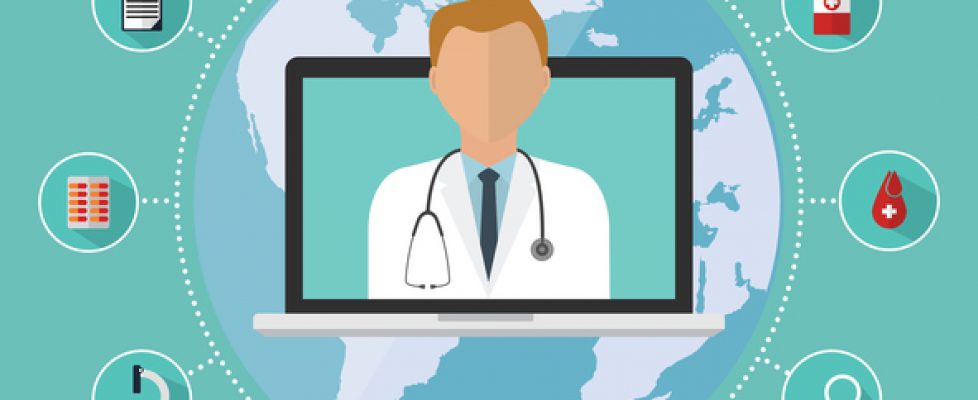Why Home Healthcare Needs More Technology and Training
An expansion of intuitive tools and internet connectivity are among key efforts to sustain remote care during the pandemic — and beyond.
The COVID-19 pandemic has brought the home healthcare industry to a crossroads.
More older adults are comfortable with mobile devices and smart technologies that help them safely age in place. Some individuals may be seeking to avoid full-time care in a congregate care setting due to the public health emergency. And telehealth use has surged, thanks to temporary expanded coverage for Medicare and Medicaid recipients.
Staying at home, when possible, is important for elderly and high-risk patients.
But the home healthcare industry has long struggled with high turnover — the annual resignation rate hit an all-time high of 82 percent in 2018, according to Home Care Pulse, a research firm. That number, which has since dropped, is now complicated by pandemic realities that can prohibit a hands-on approach tied to improved outcomes.
The benefits are many: A 2019 study in The American Journal of Accountable Care found that home healthcare may result in lower costs and a lower hospital readmission rate for Medicare beneficiaries after emergency room visits. Other research has determined the practice can decrease clinician visits and even mortality rates.
COVID-19 has truly created a need for touchless strategies that complement (or even deliver) elements of post-acute care. Organizations must come up with creative and effective ways to serve this population — whether or not they can physically be there.
Remote Patient Monitoring and Smart Tech in Home Healthcare
There’s no question home healthcare visits provide valuable face time. Simply interacting with a patient can offer important clues to guide care. Wellness check-ins and telehealth visits conducted with a computer or smartphone can help fill the void.
As the public health emergency complicates these connections, however, remote patient monitoring technologies that gather and transmit personal health data to caregivers will play an increasingly critical role.
Software and devices designed to measure a user’s vital signs — such as blood pressure, temperature, heart rate, oxygen saturation levels and weight — can take Wi-Fi-enabled readings via existing consumer technology or a specialized tool.
Not only do these technologies eliminate the risks of in-person contact, they can drive efficiencies for busy healthcare staff. Even better, this data collection empowers patients — and the real-time readings, if shared with family members, could allow interventions in real time.
Fifty-one percent of surveyed home healthcare providers who use technology already offer remote patient monitoring in some form, according to a white paper released this year by AlayaCare and Home Health Care News. And nearly three-quarters of respondents said the pandemic is prompting a re-evaluation of their technology needs.
That shift could open the door to many more opportunities in the home setting. Think “smart pills” with digital sensors to record adherence or diapers with radio-frequency identification tags to alert caretakers, among other helpful ideas.
I’m also encouraged by efforts at Pennsylvania’s Geisinger Health, which is deploying VR headsets for home-based patients to improve pain management. California provider Libertana Home Health has created an Alexa skill to help elderly users connect with caregivers, set medication and appointment reminders, and input health data.
Each component, properly planned and implemented, has an important role to play.
Boost Training and Infrastructure for Home Healthcare Programs
Despite a growing interest in technology and its proven value to support care in a home-based setting, obstacles remain: 1 in 4 older adults doesn’t use the internet, the Pew Research Center notes, and others face issues of connectivity.
And nearly one-third of home healthcare providers don’t incorporate technology into their services, the AlayaCare/Home Health Care News survey data shows. Top hurdles to doing so, respondents said, include costs and a lack of reimbursement. Technology vendors must work with care providers to navigate this complex issue.
Positive news came this month when the U.S. Centers for Medicare & Medicaid Services announced amended terms for accelerated and advanced payments granted to Medicare-certified healthcare providers — including home health agencies — but more work remains to fund new and wider uses for technology, including broadband.
After all, connectivity is required to make these tools work. Public-private initiatives, such a new pilot program in California, are working to bring high-speed internet service to low-income seniors. Still, the service must be affordable and accessible for all.
Finally, education must lie at the heart of all projects. Teaching older users to accept and master the tools — and training employees and loved ones to work with them — will determine the success and direction of these critical applications.

